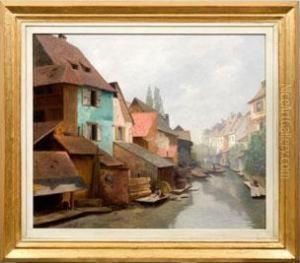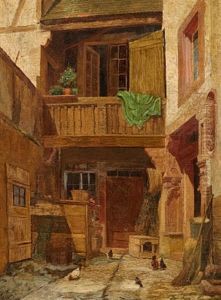Karl Friedrich H. Schuster Paintings
Karl Friedrich Hieronymus Schuster, born in 1870, was a German artist whose work spanned the late 19th and early 20th centuries, a period rich in artistic evolution and innovation. Though not as widely recognized as some of his contemporaries, Schuster's contributions to the art world, particularly within the realms of painting and illustration, reflect the varied influences and aesthetic shifts of his time. His oeuvre offers a unique perspective on the transition from traditional to more modernist expressions, capturing the zeitgeist of an era that was characterized by rapid social, technological, and cultural changes.
Schuster's early life and education were deeply rooted in the artistic traditions of Germany, a country that has produced a myriad of significant artists and movements. He honed his skills in various art schools, likely engaging with both the technical rigor of academic art and the burgeoning ideas of impressionism and post-impressionism that were beginning to permeate the European art scene. This duality of influence is evident in his work, which often features the precise delineation of form characteristic of academic art, alongside a more fluid, expressive use of color and brushwork that hints at the coming modernist revolution.
Throughout his career, Karl Friedrich H. Schuster actively participated in the vibrant cultural life of Germany, exhibiting his work in galleries and being involved with artistic circles that debated and shaped the course of German art. Despite the tumultuous backdrop of the early 20th century, including two World Wars and the seismic shifts in society and politics they engendered, Schuster continued to produce work that reflected both his personal vision and the broader aesthetic currents of the time.
After his death in 1952, Schuster's legacy, like that of many artists of his era, underwent a period of reassessment. Today, he is appreciated for his contributions to the German art scene of the late 19th and early 20th centuries, and his works can be found in both private collections and public institutions. His artistic journey encapsulates the challenges and triumphs of an artist working through one of the most dynamic and complex periods in history, making his body of work a fascinating subject for study and appreciation.

